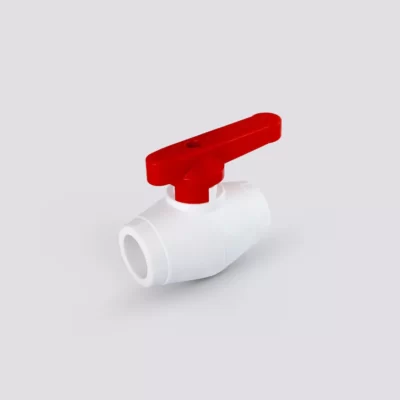PP (R & RCT & RCT-GF) Pipes and PP-RCT Fittings
Product Categories
Product Tags
- Bracket
- Clamp Fitting
- Coupling Fitting
- Fitting
- Manifold
- Manifold Box
- Manifold Box Manifold
- PE 100
- PE 80
- Pipe
- Press Fitting
Technical specifications (PPRCT, PPR)
| Pipe Size (mm) | Standard thickness range (mm)/PPRCT | Standard thickness range (mm)/PPR | Standard external diameter range (mm) | Pipe Length (m) |
| 20 | 2.8-3.2 | 3.4-3.9 | 20-20.3 | 4 |
| 25 | 3.5-4 | 4.2-4.8 | 25-25.3 | 4 |
| 32 | 4.4-5 | 5.4-6.1 | 32-32.3 | 4 |
| 40 | 5.5-6.2 | 6.7-7.5 | 40-40.4 | 4 |
| 50 | 6.9-7.7 | 8.3-9.3 | 50-50.5 | 4 |
| 63 | 8.6-9.6 | 10.5-11.7 | 63-63.6 | 4 |
| 75 | 10.3-11.5 | 12.5-13.9 | 75-75.7 | 4 |
| 90 | 12.3-13.7 | 15-16.7 | 90-90.9 | 4 |
| 110 | 15.1-16.8 | 18.3-20.3 | 110-111 | 4 |
| 125 | 17.1-19 | 20.8-23 | 125-126.2 | 4 |
Raw material technical specification
| International standards | ISO 15874-2 DIN 8077/8078 |
| Pipe structure | Single layer |
| Consuming materials | Polypropylene (PP) random copolymer with modified crystallization (PPRCT) |
| Standard production series and class | 2.5 SDR6 3.2 SDR7.4 |
| Pipe color | White with blue and red stripes |
| Category/ PN | Class 1/ 10 bars |
Advantages
- Anti-sediment, anti-decay and anti-rust.
- Insignificant pressure drop due to the low roughness coefficient (inside the pipe).
- Fast and easy to install.
- Resistant to chemicals (acids,…).
- Resistant to physical shock and environmental degradation.
- Guide lines on all pipes and fittings.
- No microorganisms growth.
Usages
- Sanitary hot & cold water piping systems (and potable water application).
- Risers installation systems.
- Industrial installations.
Three-layer PP pipes
Technical Specification
| Size (mm) | Thickness (mm) | Outer Diameter (mm) |
| 20 | 3.4 | 20.3 |
| 25 | 4.2 | 25.3 |
| 32 | 5.4 | 32.3 |
| 40 | 6.7 | 40.4 |
| 50 | 8.3 | 50.5 |
| 63 | 10.5 | 63.6 |
| 75 | 12.5 | 75.7 |
| 90 | 15 | 90.9 |
| 110 | 18.3 | 110 |
| 125 | 20.8 | 125 |
Features
| Standards | ISO 21003-2 & ISO 15874-2 DIN 8077/8078 |
| Class | S2.5 SDR 6-PN25 |
| Type | PPRC TYPE 3 |
| Color | White |
| PN | 10 Bars |
| Application Class | Class 1& 5 |
Technical specification
| Color | Mid-gray RAL 7037 | |
| Density | g/cm3 | 0.91 |
| Tensile strength at 20 co | N/mm2 | 30 |
| Yield stress | N/mm2 | 21 |
| Flexibility factor | N/mm2 | 1200 |
| Elongation | % | 800 |
| Bending stress | N/mm2 | 20 |
| Elasticity | N/mm2 | 350 |
| Impact strength | kJ/m2 | 25 |
| Thermal conductivity | W/m2K | 0.23 |
| Linear expansion coefficient | m/mk | 0.00015 |
| Roughness index | mm | 0.007 |
| PH rate | 2-12 |
Advantages
- Increased pressure & temperature resistance of the product compared to single-layer PPR pipes.
- Very low linear expansion coefficient in comparison with single-layer PPR pipes (about 75% less):
- – Minimizes the changes in the pipe length caused by temperature fluctuations inside the piping system. -Minimizes the number of pipe clips used in the piping system and hence, reduces the costs.
- Higher mechanical properties as compared to single-layer PPR pipes.
- Quick and easy installation that saves about 30% of installation time compared with PPR foil pipes.
- Less heat loss compared to PPR foil pipes and metal ones due to its lower thermal conductivity coefficient.
- impossibility of layers separation.
- Lower weight than PPR foil and metal pipes and easy transportation.
Usages
- Sanitary hot & cold water piping systems (and potable water application).
- Cooling tower risers.
- Compressed air distribution systems.
- Fan coil unit drain piping.
- Risers installation systems.
Product Tags
- Accessory Fitting
- Bracket
- Clamp Fitting
- Coupling Fitting
- Fitting
- Manifold
- Manifold Box
- Manifold Box Manifold
- PE 100
- PE 80
- Pipe
- Press Fitting
see our
CERTIFICATES
Previous
Next












